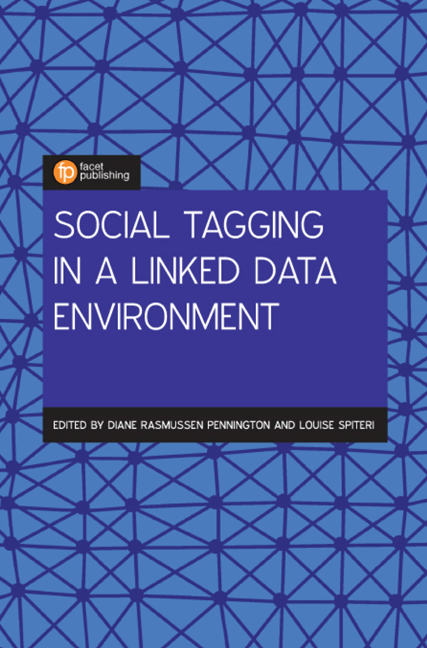Book contents
- Frontmatter
- Contents
- List of figures and tables
- Contributors
- 1 Introduction: the continuing evolution of social tagging
- 2 Tagging the semantic web: combining Web 2.0 and Web 3.0
- 3 Social tags for linked data with Resource Description Framework (RDF)
- 4 Social tagging and public policy
- 5 Hashtags and library discovery systems
- 6 Social information discoverability in Facebook groups: the need for linked data strategies
- 7 #FandomCommunication: how online fandom utilises tagging and folksonomy
- 8 Keys to their own voices: social tags for a dementia ontology as a human right
- 9 Social tagging and the enterprise: an analysis of social tagging in the workplace
- 10 Use and effectiveness of social tagging recommender systems
- Index
1 - Introduction: the continuing evolution of social tagging
Published online by Cambridge University Press: 01 June 2019
- Frontmatter
- Contents
- List of figures and tables
- Contributors
- 1 Introduction: the continuing evolution of social tagging
- 2 Tagging the semantic web: combining Web 2.0 and Web 3.0
- 3 Social tags for linked data with Resource Description Framework (RDF)
- 4 Social tagging and public policy
- 5 Hashtags and library discovery systems
- 6 Social information discoverability in Facebook groups: the need for linked data strategies
- 7 #FandomCommunication: how online fandom utilises tagging and folksonomy
- 8 Keys to their own voices: social tags for a dementia ontology as a human right
- 9 Social tagging and the enterprise: an analysis of social tagging in the workplace
- 10 Use and effectiveness of social tagging recommender systems
- Index
Summary
The genesis of an idea: Louise's perspective
I was introduced to the concept of social tagging when I was asked by Library and Archives Canada to speak about folksonomies at a metadata conference in Ottawa in 2005. Although I had heard the term, which was coined by Thomas Vander Wal (2007) in 2004, I did not know much about it, but I was certainly interested in the opportunity to learn more about this concept. As with most scholars in this field, my first in-depth exposure to the concept of social tagging was Adam Mathes’ now classic article on folksonomies (2004). My area of expertise was in the areas of cataloguing, classification and thesaurus con - struction, all areas where language and descriptors are carefully chosen and controlled by professional information managers. I became intrigued at the possibilities that social tagging could provide to our carefully curated metadata records in libraries, which was the basis for my first article on the topic on social tagging (Spiteri, 2006) and which opened a new area of research interest that has continued to grow over the years.
For several years, I have studied the contributions of social tagging to library discovery systems (Spiteri, 2006; 2007; 2009); my interest in this particular topic was inspired by courses I teach in the areas of the organization of information, cataloguing and classification, as well as my involvement in social reading sites such as LibraryThing and Goodreads. I was struck by the dynamic and interactive nature of these reading sites: readers voluntarily edited metadata records for books, added social tags to describe content, created and shared reading lists, engaged in discussions with other readers, wrote reviews of items they had read and responded to reviews written by others. I was struck also by the difference between these dynamic sites and the static nature of the public library catalogues that I used, and used as exemplars for my students. These catalogues contained carefully constructed metadata records, using established and standardised metadata standards such as Anglo-American Cataloguing Rules and, more recently, Resource Description and Access, codified via the MARC (MAchine Readable Cataloging) framework and standard Library of Congress Subject Headings to describe the content and genre of a work.
- Type
- Chapter
- Information
- Social Tagging for Linking Data Across Environments , pp. 1 - 10Publisher: FacetPrint publication year: 2018



